03 - 03 - 2006
Result
Figure 1: Mean action potential activity of tactile sensilla receptors in femural of cockroach.
In this experiment, it was found that there exists a spontaneous resting activity within the cockroach tibia even though tactile sensilla receptors have not yet been stimulated. From figure 1 it can be observed that the mean spontaneous resting activity of the cockroach leg is (42+/-9.7) action potentials/sec. After the tactile sensilla receptors were stimulated by moving the receptor with and against direction of growth there was an increase of action potentials. From figure 1 it can be seen that tactile sensilla receptors are least sensitive when stimulated with their direction of growth which resulted in mean of (94+/-9.9) action potentials/seconds. However, from figure 1 it can be observed that tactile sensilla receptors are most sensitive when stimulated against their direction of growth which resulted in mean of (197+/-12) action potentials/second.
After performing Mann-Whitney U statistical tests it was found that the results are statistically highly significant as seen on table 1. When tactile sensilla receptors are stimulated in any direction, there is a significant change in action potential activity with a statistical p value of less than 0.01. Also the results found about the sensitivity of tactile sensilla receptors are statistically highly significant (p<0.01).
Table 1: Neural discharge activity within femoral of cockroach and statistical significance:
Individual # | Spontaneous (spikes/sec) | with direction of growth (spikes/sec) | against direction of growth (spikes / sec) | Statistical Significance: |
1 | 34 | 80 | 198 | Between spontaneous and with direction of growth: P<0.01 Highly Significance |
2 | 56 | 88 | 178 | |
3 | 23 | 90 | 208 | |
4 | 45 | 79 | 201 | |
5 | 32 | 100 | 206 | |
6 | 34 | 101 | 198 | |
7 | 36 | 88 | 199 | Between Spontaneous and against direction of growth: P<0.01 Highly Significance |
8 | 34 | 98 | 178 | |
9 | 38 | 87 | 186 | |
10 | 59 | 78 | 185 | |
11 | 50 | 103 | 190 | |
12 | 34 | 105 | 193 | |
13 | 56 | 110 | 176 | Between with direction of growth and against direction of growth: P<0.01 Highly Significance |
14 | 54 | 103 | 204 | |
15 | 38 | 96 | 207 | |
16 | 40 | 110 | 203 | |
17 | 41 | 91 | 210 | |
18 | 44 | 94 | 221 | |
19 | 49 | 89 | 196 | |
20 | 48 | 105 | 199 | |
AVERAGE: | 42 | 95 | 197 | |
DEVIATION: | 9.7 | 9.9 | 12 |
Discussion:
In this study we observed when cockroach tactile sensilla receptor detect signals such as air movement or touch initiates action potential activities higher than its spontaneous resting activity. This result was highly significant (p<0.1). With great significance, (p<0.01) we also observed that if tactile sensilla receptor are stimulated against their direction of growth, they will initiate more action potentials than if they are stimulates is received with their direction of growth. As seen in figure 1 above, there were more action potentials initiated when tactile sensilla receptors received signal against direction of growth than with direction of growth. Highly significant difference was found between the sensitivity of the direction of growth of tactile sensilla receptor.
The cockroach has many different mechanoreceptors in the leg which detects external mechanical stimuli, such as touch, air, and sound. Tactile sensilla receptors are one type of the sensory mechanoreceptors in the leg which are responsible in detecting signals from mechanical stimulation such as touch. One function of tactile sensilla receptor is to provide a predator response mechanism for the cockroach. These receptors detect signals initiated by the predators such as touch to detect their presence. After the signal is received by tactile sensilla receptors, increased neural discharge is initiated which initiate the organisms' escape response. The leg muscles detect these increases in action potential and contract moving the cockroach away from the source of signals.
Cockroach femoral tactile spine is a type I mechanoreceptors and it contains a single bipolar sensory neuron. At the base of the tactile spine, there are afferent neural sensory dendrites which are sensitive to signals. These dendrite in the wall of the spine leads through the spine lumen to a cell body, and then to an axon that proceeds along the femur. One interesting point is that the cell body is surrounded by glial cell however there is no glial cell wrapped around axon body or dendrites. The location of glial wrapping can suggest that they assist in passive conduction action potential from dendrites to the axon. (French 1993).
Originally the dendrites are surrounded by fluid called endolymph which is rich in K+. When there is no stimulation there are few movement of ions in and out of the dendrites, this is can be seen in figure 1 as resting spontaneous potential activity. When there is a movement in tactile receptors bristle, the K+ channels open. Due to different concentration of K+ ions across the cell membrane, K+ ions enter the cell, causing the cell to depolarize. These causes increase in neural discharge resulting in increase in number of action potential. (Moyes & Schulte 2006).Depending on which direction the bristle moves, more or less K+ channel opens and therefore result in different amounts of action potential discharge as seen in figure 1.
Sensory neurons associated with peripheral sensory structures, tactile spines, are activated by a threat. The sensory neurons converge by attaching to interganglionic interneurons called TIAs. TIAs are were the information are translated to escape response in cockroach determining the escape turn and direction.(Schaefer 2001) Therefore sensitivity of the tactile receptors bristles is important in identifying the direction in which the cockroach escapes.
This experiment can improve by trying to control the other stimulation caused by noise and air vibration to clearly see the effect of mechanical stress on the tactile sensilla receptor. Also in future experiment we should include a device that can detect action potential discharge at different bending angle of tactile bristle. There should be a clear observation that different bending angle of bristle results in different neural discharge intensity. Also longer duration of stimulation to tactile sensilla receptor should be done in order to see how adaptive the receptor is to constant stimulation and how this fact help organism to escape from predators that are following them for long period of time.
Study done by Pringle in 1937 clearly shows that when tactile receptor undergoes mechanical strain there is an increase in neural discharge of action potential. It was also seen that tactile sensilla is most sensitive when bending in certain direction. The sensitivity of the sensillum will be dependent on the absolute length of the long diameter of the cap of the tactile bristle. These results support our result that tactile receptors function when there is a mechanical stimulus and they are more sensitive bending in one direction (against their direction of growth), than bending in other directions (with their direction of growth). An experiment done by Moran et al in 1971 showed that, when there is a mechanical strain on leg, the leg cuticle is strained and the thin cap of the tactile sensillum is displaced. The mechanical depression of the cap of a tactile sensillum stimulates the sensillum to produce a train of nerve impulses detectable in the afferent neuron. The strain increases the cell conductance thus depolarizing the cell and therefore creating action potential in the leg. This clearly supports our result that when tactile sensilla are stimulated by mechanical strain there is an increase in action potential. One important experiment performed to find the function of tactile receptors was done by Librastat in 2003. In this experiment it was observed that wasp uses venom cocktail to manipulate the behavior of its cockroach prey. It was seen that, before wasp approaches cockroach, it placed venom in the cockroach leg to block all sensory inputs including tactile sensilla receptors. The wasp then approaches the cockroach and even bites off its antennae without initiating any escape behavior in cockroach. In so doing, the wasp had applied tactile stimuli that would, in a normal cockroach, immediately trigger an escape and run. Therefore, it showed that tactile sensilla are important in initiating escape response mechanism in the cockroach. Some experiments are done to illustrate the escape movements evoked by tactile stimulation in the cockroach. One such experiment was performed by Schaefer et al in 1994) which studied the affect of tactile stimuli on different mechanoreceptors. It was observed that 85.7% resulted in vicious escape movement but in different direction. Tactile stimuli to the head and thoracic regions resulted in different escape direction than tactile stimuli to the abdomen resulted. It was concluded that the direction of escape of cockroach depended on the direction that the tactile sensilla receptor is bent. Another experiment was done by (Schaefer et al., 2001). It was observed that when there is a tactile stimulation to the body or to the antennae, the escape movement of cockroach is composed of an initial directional turn that turn the animal away from the threat followed by a run of more random direction. This depended on which receptor is stimulated and in which direction. This finding support our result that the mechanoreceptors are more sensitive depending in which direction they are bent due to their different sensitivity.
Mechanoreceptors are one of the main ways that organisms interact with the environment. Mechanoreceptor helps detect changes in external environment to initiate change in internal system of the species in order for species to be able to avoid any danger and survive. One of the main importances of mechanoreceptors is to identify the location of predator and to determine if there is an attack initiated by the predator. Therefore, escape response can be initiated by the prey in order to avoid predation and to survive. Throughout history, mechanoreceptors have been under effect of evolution changing from being simple to having highly complex mechanism as seen in tactile sensilla in cockroach. Simple mechanoreceptor could not transfer and translate signal as fast as recent mechanoreceptors. However throughout history organisms that were able to detect and translate signals faster were more able to avoid predation and survive. Therefore this led to evolution of more complex mechanoreceptors. Cockroaches have been living for million of year and showing little sign of evolution. This is partly due to their complexity mechanoreceptors which allowed them to adapt and interact with their environment and avoid extinction. Therefore, by studying mechanoreceptors we can get more information on how species try to adapt to their environment and use the information to help human adapt to the current changing environment due to global warming and many other factors.
�PAGE � �PAGE �7� The Sensitivity of Tactile Sensilla Mechanoreceptors of Cockroach
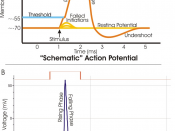
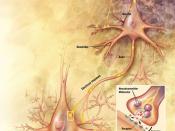
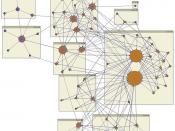
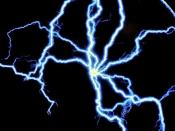
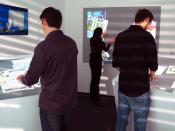

Introduction and discussion do not go together
This essay is about Daphnia in the discussion not the cockroach leg.
0 out of 0 people found this comment useful.